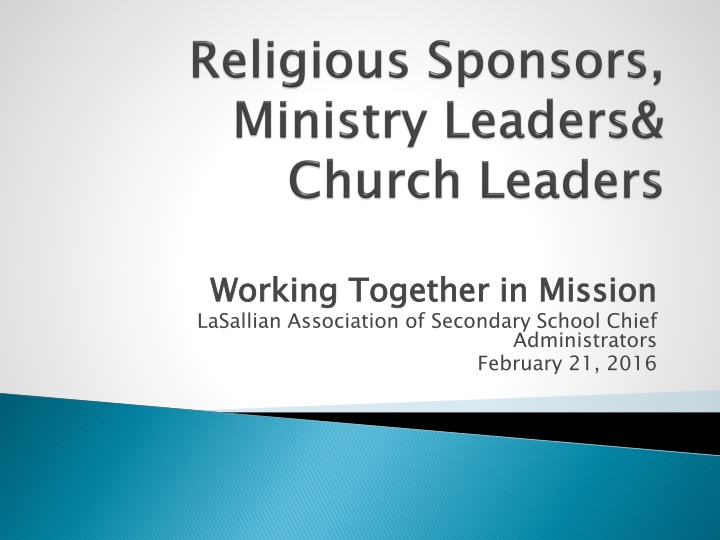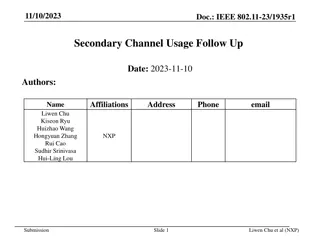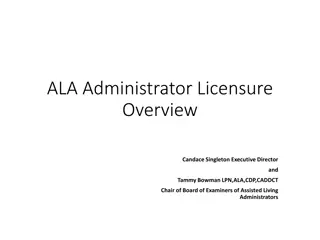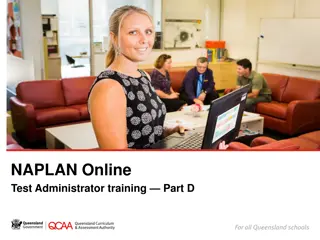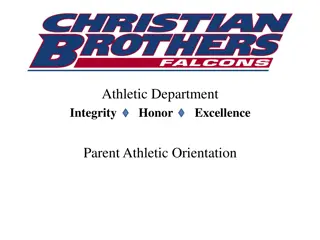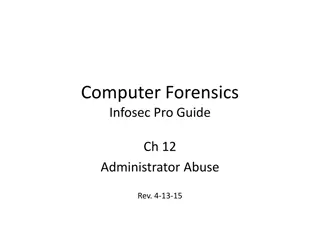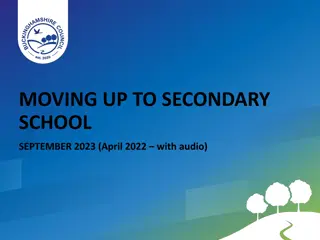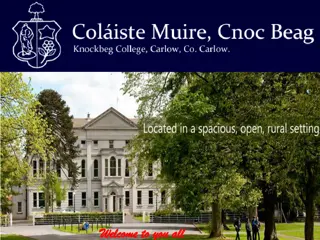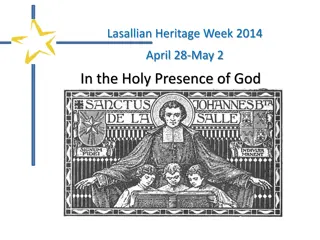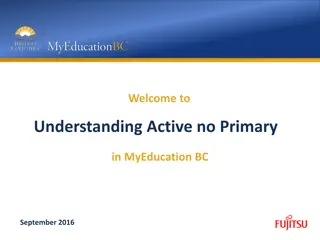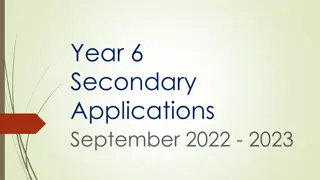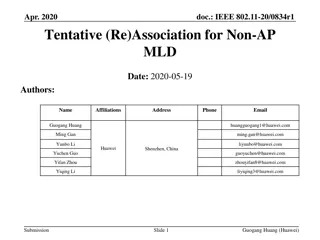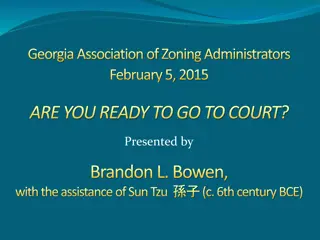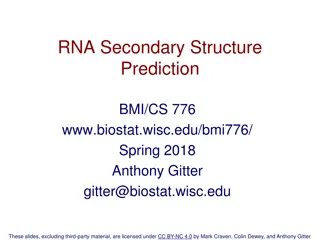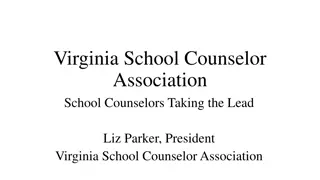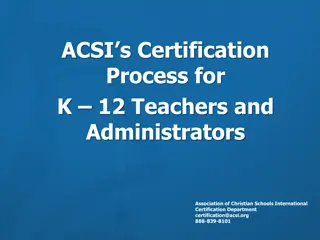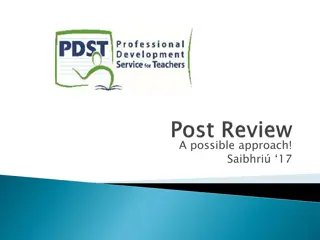Working LaSallian Association of Secondary School Administrators
This content delves into the complex relationships and structures within Catholic institutions, emphasizing collaboration for mission and promoting the Church's work. It discusses sponsorship, Catholic identity, autonomy of religious institutes, and the role of ecclesiastical property.
Download Presentation

Please find below an Image/Link to download the presentation.
The content on the website is provided AS IS for your information and personal use only. It may not be sold, licensed, or shared on other websites without obtaining consent from the author.If you encounter any issues during the download, it is possible that the publisher has removed the file from their server.
You are allowed to download the files provided on this website for personal or commercial use, subject to the condition that they are used lawfully. All files are the property of their respective owners.
The content on the website is provided AS IS for your information and personal use only. It may not be sold, licensed, or shared on other websites without obtaining consent from the author.
E N D
Presentation Transcript
Working LaSallian Association of Secondary School Chief Working Together in Mission Together in Mission Administrators February 21, 2016
Sponsorship and Catholic Identity Autonomy of Religious Institutes and Authority of the Diocesan Bishop Cooperation and Collaboration for mission 2
Complex of structural relationships No legal meaning in canon or civil law Evolving concept of broad categories: Governance Influence Advocacy 3
Sponsorship of an apostolate or ministry is a formal relationship between a recognized Catholic organization and a legally formed entity, entered into for the sake of promoting and sustaining the Church s mission in the world. Sponsorship in the U.S Context: Theory and Praxis (CLSA 2006) 4
Catholic institutions: Those to whom the representatives of the juridic person (e.g., Christian Brothers) entrust the governance and administration of the institution board of trustees and administrators for the Catholic institution 5
aggregate of persons or things in the Church distinct from the natural persons or material goods belonging to it established by decree of competent church authority or by the law carries out mission entrusted to it in the name of the Church 6
continuous existence unless legitimately suppressed by competent authority canonical rights/obligations similar to those of natural persons Represented by physical persons authorized to act on its behalf Property is ecclesiastical property 7
fulfills its function in the name of the Church Activities of group are work of the Church Not the work of individuals on behalf of the group Work entrusted to the public juridic person is carried out in the name of the Church perpetual unless suppressed assets are ecclesiastical property Decisions made by its members (collegial) 8
Nine duties of canonical stewards Vigilance and ownership Observance of canon and civil law Debt payment and investments Receipts Archival of documents Sponsoring body fulfills these duties directly delegation Reserved Powers 9
Governance Models for Sponsoring Body: Unicameral Bicameral Reserved powers Shift today Ability of sponsor to control ability to influence Less emphasis on ownership Cooperation between Diocese and Institute Focus on Catholic identity and mission Expression of communion 10
Catholic Identity a sure sign of the authenticity of a charism is its ecclesial character when integrated harmoniously into the life of the people of God (EG 130) in communion charism is authentic and mysteriously fruitful Apostolic Exhortation Apostolic Exhortation Evangelii Evangelii gaudium Pope Francis gaudium 11
Life-giving connection Three Requirements: Assertion public identity Validation authenticated by church authority Integration compatibility with Catholic Church teaching Permeate culture of ministry 12
Search for new models of sponsorship Current factors impacting sponsorship relationship: Fewer women and men religious Merging of religious institutes, completion Complex governance in education, social services Increased role of the laity in Church s mission 13
No template for sponsors and leaders Key expectations Understanding of mission and vision Rootedness in charism and Catholic identity Clarity of roles Ongoing formation Support Sponsorship is a partnership relationship 14
Chief pastoral leader Key authority figure Broad authority Possesses power necessary to carry out duties Power not absolute Right and duty to issue laws for faithful Regulates worship and apostolate 15
Diocesan Bishop (c. 394) To promote forms of apostolate in diocese To coordinate all apostolate works in diocese Apostolate of Religious (c. 675 3) Exercised in name of and by mandate of Church Carried out in the communion of the Church 16
Apostolates of Religious (sponsors, leaders and those ministering in Catholic institutions) Subject to authority of diocesan bishop Care of souls Public worship All other works of the apostolate Leaders & Bishops 4 C s 17
Mutuae relationes (1978) Theological foundations Practical norms No single model Need for balance (c. 678) Bishop s authority to exercise ministry Religious Institute s rightful autonomy of governance (c. 586) Mutual consultation and respect for roles 18
Canon 804 Canon 804 Religious Instruction Subject to authority of diocesan bishop Teachers of religion; distinguished by Teaching Catholic doctrine Witness of Christian living Possession of pedagogical skills 19
Authority of Diocesan Bishop to appoint/remove teachers of religion Reasons of religion or morals Removal: Serious nature Respect for the rights of all parties 20
Right of Vigilance & Visitation All Catholic Schools in territory Including those sponsored by Religious Institutes Authority to issue regulations Respect autonomy of governance in Religious Institutes 21
Experience of episcopal oversight Ecclesiam suam Paul VI method of accomplishing mission Vita Consecrata constant dialogue between bishops and religious (superiors) most valuable for mutual understanding Canon 678.3 proceed through mutual consultation 22
Catholic Common Ground Initiative Dialogue requires relationships Listen; engagement in another s view Faith and prayer are essential; experience of ecclesial communion Careful not to ascribe motives to others Dialogue takes time 23
Strength of the Church: communion Not all problems solved by canonical norms Search for the common good Participation in mission of Christ and Church Attitude of heart and mind grounded in charity 24
